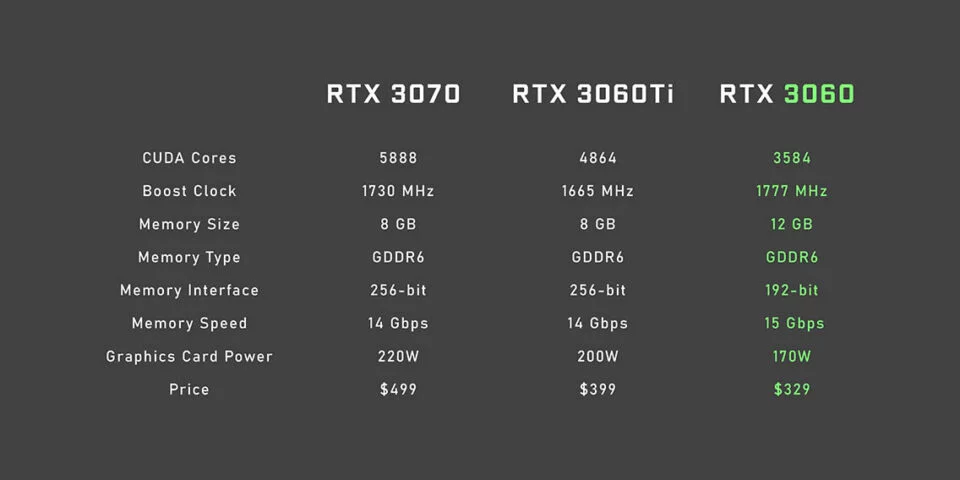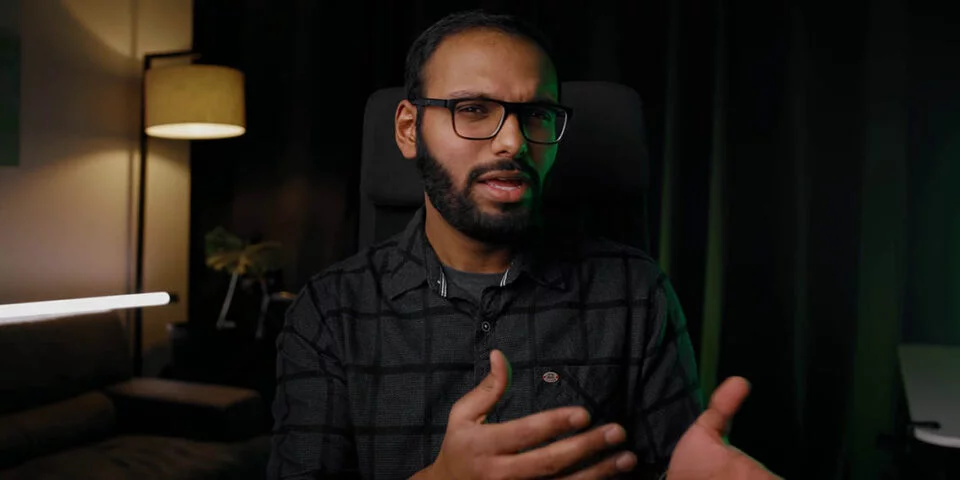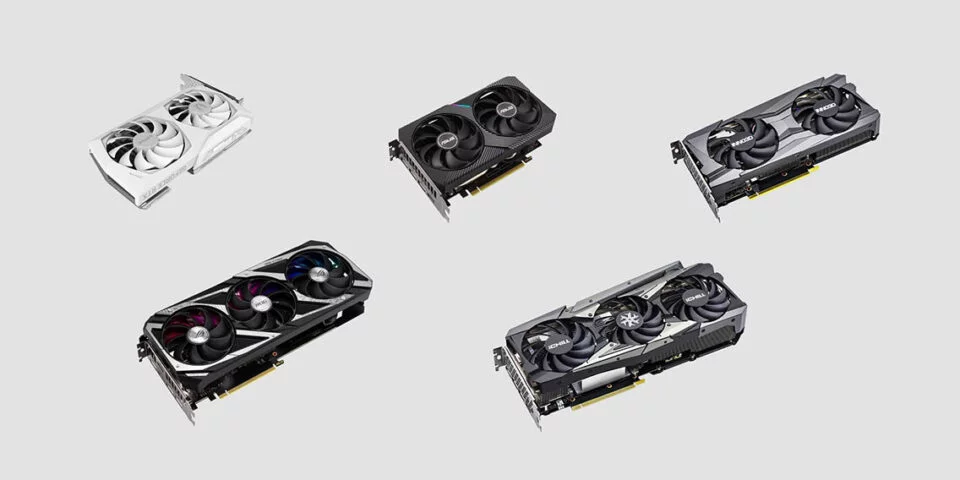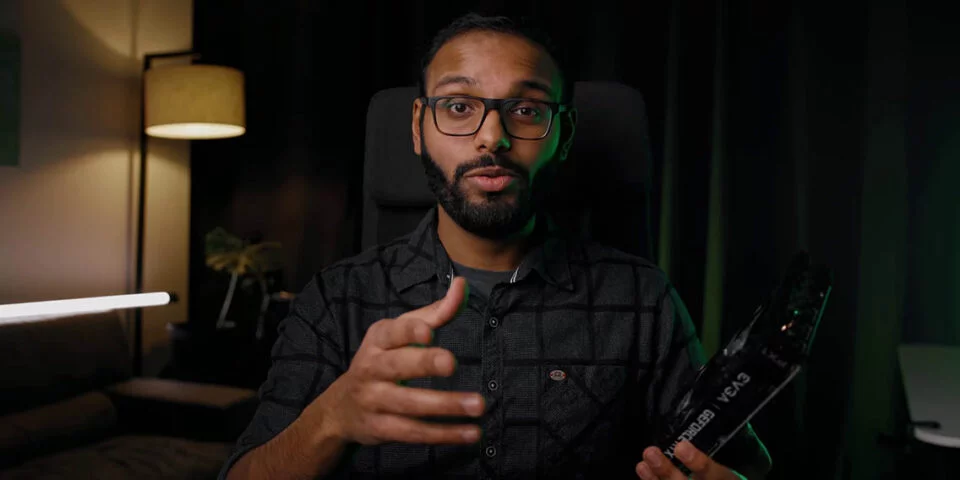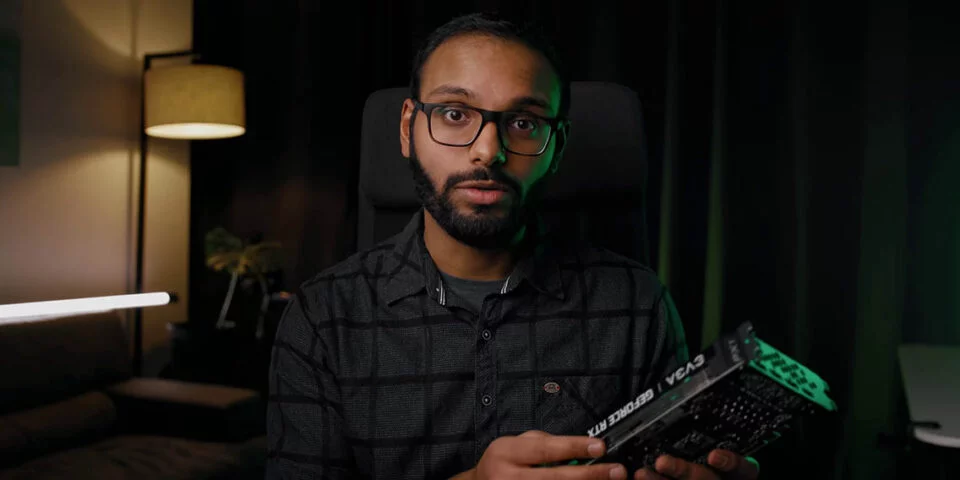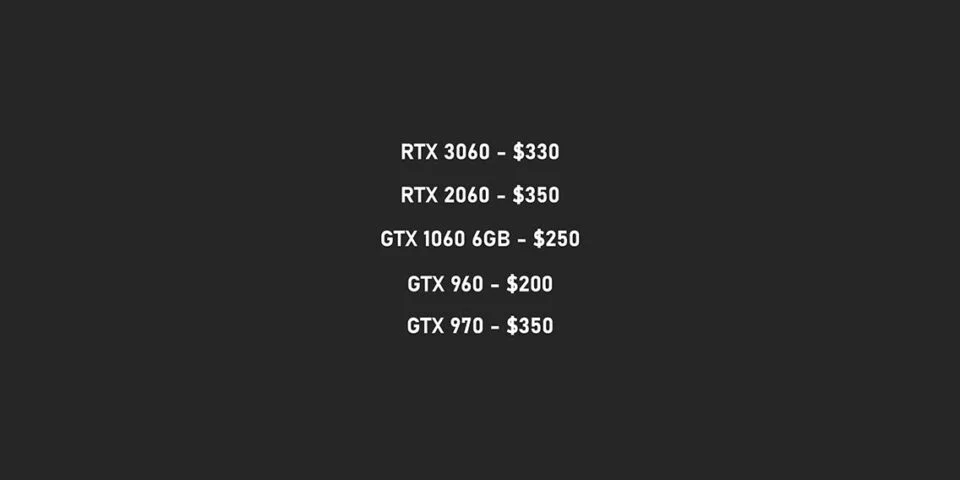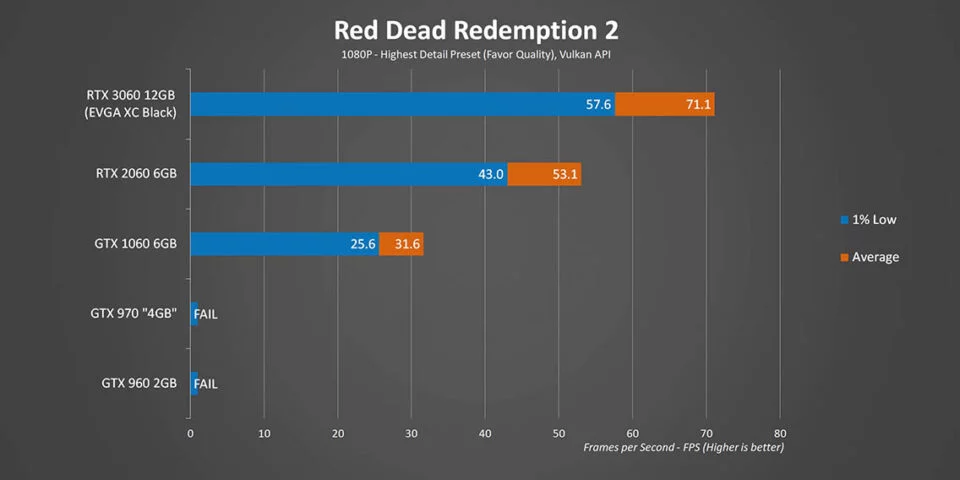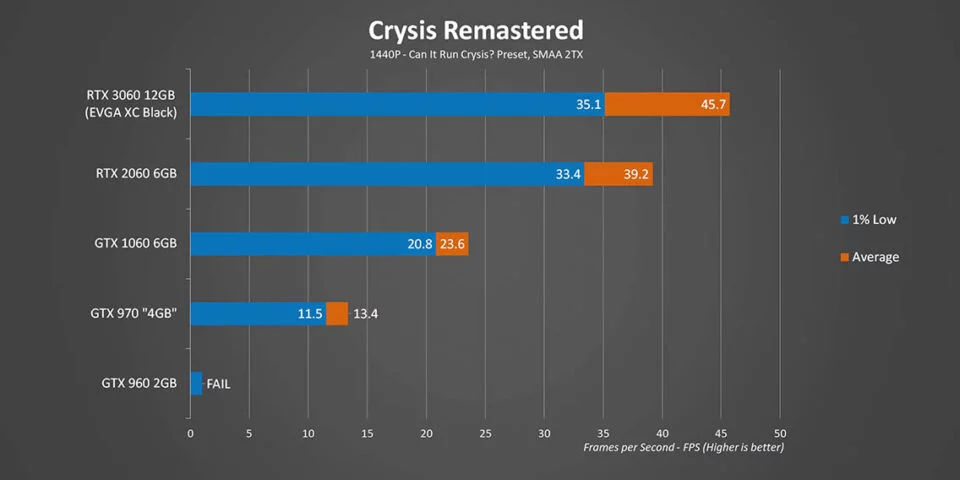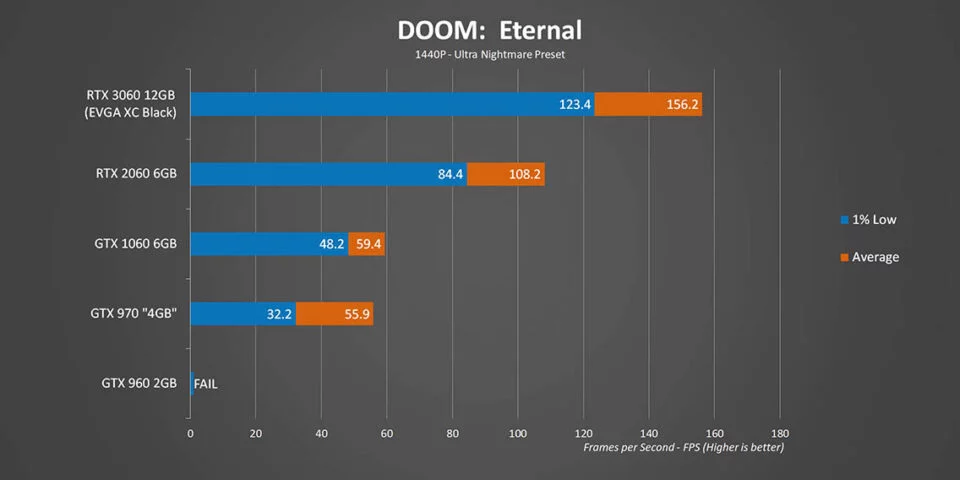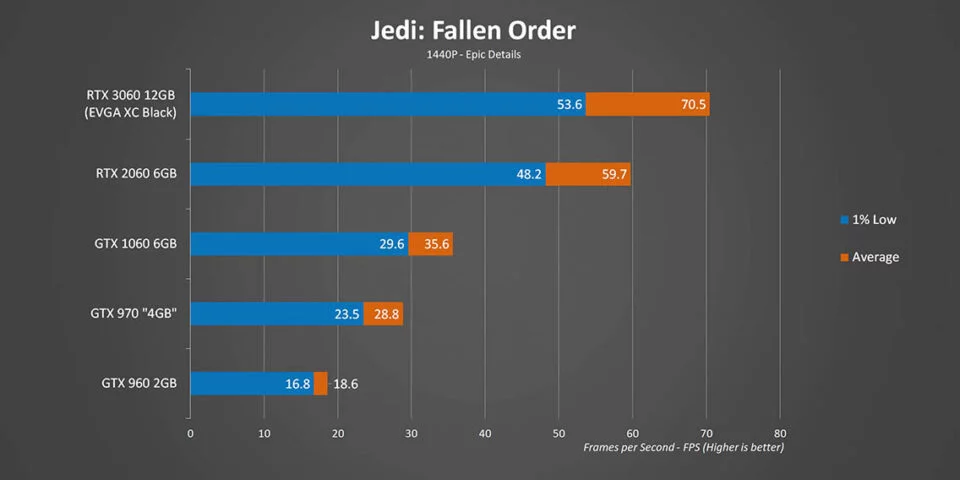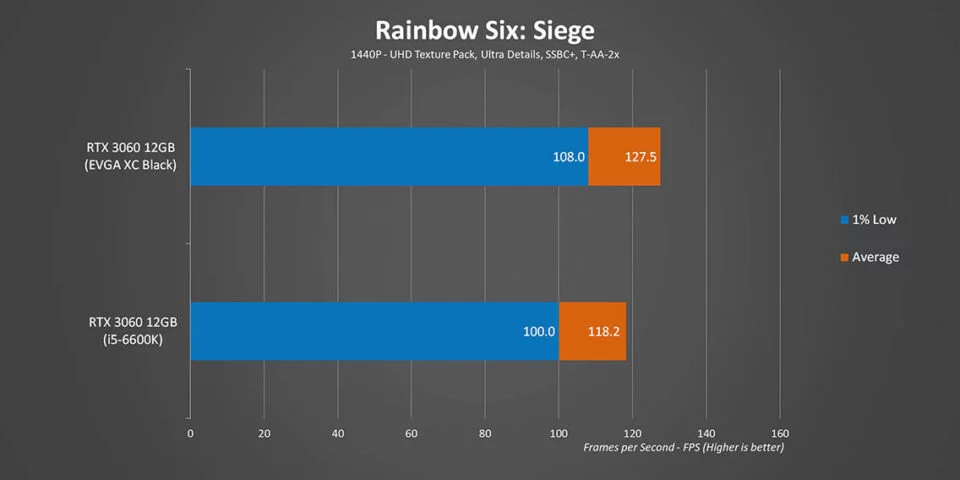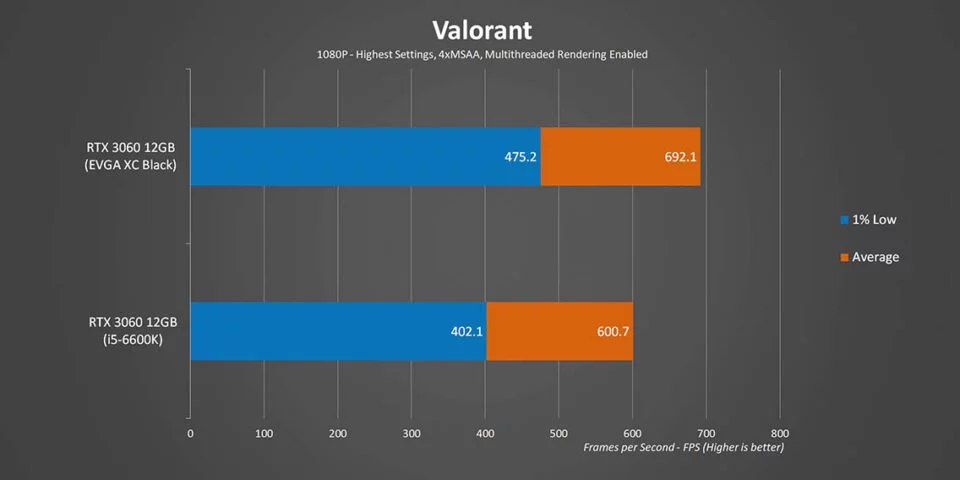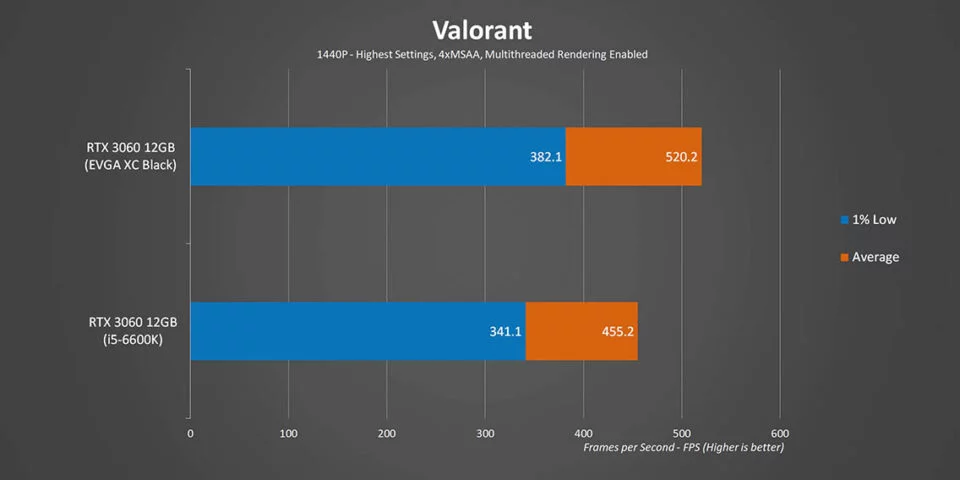From GTX 960 to RTX 3060 – FINALLY Time to Upgrade

Share:
Table of contents
It’s time for another GPU launch, and I know what’s probably going through your minds right now: This is yet again another graphics card that you just can’t buy. Well we will just have to wait and see what the stock situation is like for the RTX 3060, but I’m just going to cross my fingers and hope that a miracle happens.
Anyways, just like our last GPU reviews, this article isn’t going to be a typical performance review because we know there is going to be plenty of them out there on the internet. I will be focusing on our usual benchmarks, but mainly I want to talk about what an upgrade path would look like for someone who is hanging on to an older card. The simple fact is that a lot of folks with 60 series cards just skipped over the RTX 2060. Even more than 4 years after it was released the GTX 1060 is still the #1 card based on the Steam Hardware Survey charts. But I also wanted to take a further step back by also talking about what the released of the RTX 3060 means for those of you who are still rocking a GTX 960 or GTX 970. Is it finally be time to step up?
Specs & Price
Before getting the benchmarks, let’s take go through the specs and discuss exactly what the RTX 3060 is all about. It is significantly cut down from the RTX 3060 Ti, but I guess that is expected since it costs $70 less. The question is whether or not those cuts went too deep, but at least board power is only around 170W. One interesting thing is the 192-bit bus meant either 6GB or 12GB of memory. With AMD’s current and upcoming cards rocking huge memory sizes NVIDIA really couldn’t have this go down to 6GB, so the RTX 3060 has more memory than the RTX 3080. With a starting price of $330 USD there is no doubt that demand will be way higher than supply, even though NVIDIA is using algorithm detection to cut Ethereum mining hash rates in half.
I want to jump onto that right away because NVIDIA is claiming that they are cutting mining performance on the RTX 3060 to get this GPU into the hands of more gamers. That plan might work but there are two problems that I see with this. First is that they are actually penalizing gamers who want to mine with their GPU in their spare time, and second even at half the speed this GPU is still going to be turning a profit in under a year. I don’t think this short-term solution will really do all that much.
EVGA GeForce RTX 3060 12GB XC
With that out of the way let’s talk about the EVGA card that we will be using here since this GPU was supposed to hit that sweet at $330 USD MSRP… technically… without crazy retailer markups. Now this is a pretty compact 8-inch GPU with a dual-slot heatsink, a single 8-pin power input, and thankfully it’s not one of those crazy designs EVGA has been pumping out lately. All-in-all it looks like a good in-place replacement or upgrade for literally any chassis. And that is important since some of the other 3060 cards that I have been seeing are ginormous.
The most important thing that we need to set here is a baseline to see how this card actually performs against other current generation GPUs. And to do that we are using our usual test system supporting the AMD Ryzen 9 5900X, and since this is meant to bridge the 1080P and 1440P performance spaces both of those resolutions will be tested. Onto the results.
1080P & 1440P Benchmarks
Let’s put this into a bit clearer perspective by looking at some averages. Overall at 1080P the RTX 3060 fits in the gap right between the RTX 2060 Super and the RTX 2070 Super, which is about what we would expect. Remember the RTX 3060 Ti took over from the RTX 2060 Super at the $400 USD price point ad it’s a good 30% faster. The RTX 3060 to RTX 2060 gap is about 20%, which is not all that much, and that is going to be a bit of a letdown to those RTX 2060 users that were going to look into upgrading to the RTX 3060.
Averages
At 1440P it’s pretty much the same too, and I have to to admit it came as a bit of a disappointment since we are so used to the RTX 3000 series delivering such massive uplifts versus the previous generation. But then again, it’s also important to remember that the RTX 3060 costs a good $20 less than the RTX 2060 did when it was launched. So there’s that.
Looking at things from a value perspective, the RTX 3060 delivers consistently good rates for its price. There is a super obvious linear increase here as well. You pay 20% more for the RTX 3060 Ti and get about 20% more performance. Also remember that we are going with launch prices and not the inflated madness that we are seeing right now. So basically everything that I just mentioned right now gets thrown out of the window if you end up overpaying for your GPU, which nobody should.
Ray Tracing Benchmarks
Meanwhile, raytracing performance is closer to the RTX 2070 Super, which was pretty much expected given the updates with second generation RT cores. Performance isn’t anywhere near regular rasterization, but at least there is a way to check out what all the fuss is about at playable frame rates.
Power Consumption
By using GA106 core NVIDIA has actually been able to cut down power consumption by quite a bit when compared to the RTX 3060 Ti, at least on the average consumption side. But there is more to it than that, especially if you’re looking to upgrade an older system that might not have a super modern power supply. That is where RTX cards might cause a few headaches for GTX 900 and GTX 1000 series owners. If you look at the peak power number on this EVGA card it is a fair bit higher than its rated 170W TDP. If you have a good 500W PSU, then you should be just fine, but these numbers need to be taken into account before just assuming that an RTX 3060 is a drop-in upgrade. Also don’t forget that most if not all RTX 3060 cards need an 8-pin connector – they don’t come with an adapter – and since not all PSU’s from years ago come with one so that could be an additional expense.
I guess that brings me to the part that I’m sure a lot of you skipped to: The upgrade path for these cards. What kind of performance can you expect? Well we used the exact same system as before, and brought a few cards out of retirement like the GTX 1060 6GB, a GTX 970, and finally a GTX 960. Now this lineup led both Mike and I into a conversation about the price creep of NVIDIA’s 60 series cards. Today the RTX 3060 is being launched at $330 USD, which might not seem like a lot when compared to the overpriced RTX 2060, but if you are coming from a GTX 1060 6GB from 4 years ago it’s a whole lot more to pay. And if you compare that to the GTX 960’s $200 our launch price, I think it drives that point home even more. The RTX 3060 is in a whole other price range. As a matter of fact, that is the same street price as the GTX 970 when that was launched.
RTX 3060 vs. Previous 60 Series Cards – 1080p
Now that the stage has been set, let’s go through this starting at 1080P. Also remember that these results were run at the highest detail levels, so turning down some of the settings will obviously allow some of the older cards to perform better. Either way it is pretty obvious that the GTX 960 simply can’t keep up with the other cards, mostly because of its 2GB memory size, which actually locks it out of playing some games at our settings. The GTX 970 is pretty impressive given its age, and it’s a bit of a fair comparison to the RTX 3060. Both launched at the same price of $330 USD, and even though the GTX 970 ended up being a super controversial card it’s hard to complain about how well it’s holding up. The older cards do still handle themselves pretty well in online shooters by delivering a perfectly playable experience. I have to say though, that GTX 1060 is such an impressive card at 1080P, and you can see why people are still hanging on to them, but while the move from it to the RTX 2060 was tough to justify the RTX 3060 gets almost exactly double the performance.
RTX 3060 vs. Previous 60 Series Cards – 1440p
Moving from 1080P to 1440P shows where the real advantages for the newer cards are, especially with the new RTX 3060. If you’re still sitting at 1080P, the GTX 960 might be showing its age, but that is nothing a few lower settings won’t fix. If you want to make a jump to a high resolution monitor though, it’s just not going to cut it. The GTX 970 fares a lot better, even with its odd memory layout of not quite 4GB, but even then jumping up to an RTX 3060 would give a night and day difference in visuals and frame rates. The funny thing is even here the GTX 1060 proves why it was one of the best GPUs NVIDIA has ever produced. It has aged like fine wine, but it does tend to run out of steam in some games here. It is now a laser targeted 1080P gaming card whereas the RTX 2060 is a lot more versatile for a wider range of resolutions. On the flip side, there is just no way I would upgrade from an RTX 2060 to this card, the benefits are just not worth it.
Performance On Older Systems
With the RTX 3060 delivering such high results against older cards on a modern system I’m sure a lot of you are probably wondering what happens when you simply drop this model into an existing PC. Would there be a CPU bottleneck or not? Well we have got you covered here as well with an upper mid-level system right out of 2015 that might have been paired up with a GTX 970 or GTX 960. I already covered the CPU bottleneck on higher-end RTX 3000 GPUs, so these results were pretty much expected. At higher detail settings, even at 1080P, you will be giving up some performance for this GPU, especially in online shooters. Move to 1440P, which moves even more load to the GPU, and the gap narrows even further. This is good news for those with already decent CPUs because at least you can get a nice graphics performance upgrade while you wait for a larger system upgrade.
Conclusion
Well I guess that is pretty much everything that I wanted to cover in this review. I think my conclusion is pretty obvious: RTX 2060 owners have absolutely no reason to upgrade to the RTX 3060, this card isn’t for you. The RTX 3060 caters to the usual mid-range GPU upgrade cycle of between 3 to 4 years. People in this price bracket just aren’t looking to jump to a new card every other year, and in that case it does pretty well, but please just don’t end up paying scalper prices for one. I hope you were able to take away something from this review, and best of luck buying one on or near launch day!






